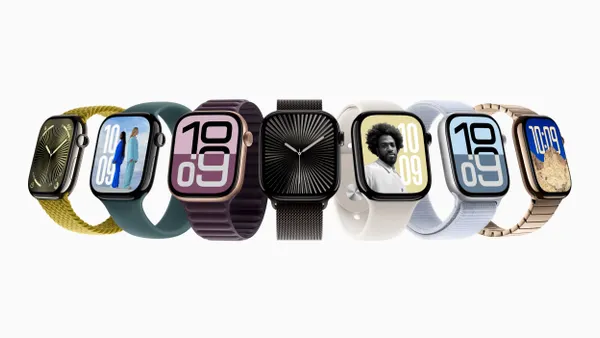Dive Brief:
-
A global consortium of heart rhythm professional bodies has voiced “clear concerns” with the accuracy of wearables used to detect cardiac arrhythmia.
-
The Heart Rhythm Society and its international peers in a consensus statement said false positives associated with the use of wearables to detect arrhythmias can cause unwarranted concerns and screening.
-
Despite those concerns, the professional bodies said the overall evidence favors the use of wearables, leading them to conclude the data may contribute to the detection of disease “when integrated into the clinical context and physician judgement.”
Dive Insight:
The potential for wearable devices capable of continuously monitoring the rhythm and rate of an individual’s heart to detect disease early has attracted a who’s who of health technology companies.
Apple generated some evidence its smartwatch could help spot atrial fibrillation through a study of almost 420,000 people last year. Verily, a sibling of Google, received 510(k) clearance for the ECG feature of its watch, and Fitbit recently began studying its devices in the detection of arrhythmias.
In assessing the clinical value of those devices and their competitors, the heart rhythm professional bodies reviewed the results of the Apple study and a smaller research project run by Chinese tech giant Huawei. Those studies generated cause for optimism about the use of wearables.
The authors of the consensus statement called the 87% predictive value of the algorithm used in the Huawei study “promising.” Similarly, the authors said the Apple study, which used seven-day ECG patches to validate irregular pulses detected by the company's smartwatch, generated evidence on the burden of notifications and the performance of the device that support a potential role in the direction of atrial fibrillation. Yet, the studies failed to quell all concerns about the approach.
“Despite this promise, there are clear concerns regarding accuracy, particularly false positives in asymptomatic patients where device-based alerts can raise unwarranted concern and generate low yield screening for disease, with associated costs,” the authors wrote.
In addition to the problem of false positives, where the device claims a person has atrial fibrillation but they do not, lead author Professor Jens Cosedis Nielsen of Denmark's Aarhus University Hospital warned in a separate written statement that "if a smartwatch picks up 30 minutes of incidental atrial fibrillation in a person with no symptoms, we have no data on whether anticoagulation prevents stroke in this situation."
Nielsen concluded: "Wearables may be very valuable in the future but at the moment they do not have a defined place in risk assessment."
The concerns led the authors to only express moderate support for the use of wearables. Positive data from more studies and further improvements to the technology could lead the professional bodies to commit unequivocally to the use of wearables in the future.
As the authors see it, wearables will become more reliable and accurate in the future, and come to collect a wider range of data. Researchers may also gather data on how alerts triggered by wearable devices affect health outcomes. As that happens, the authors think wearables may “become truly disruptive in our healthcare sector, with large segments of the population accessing cardiac monitoring that the physician must interpret."










